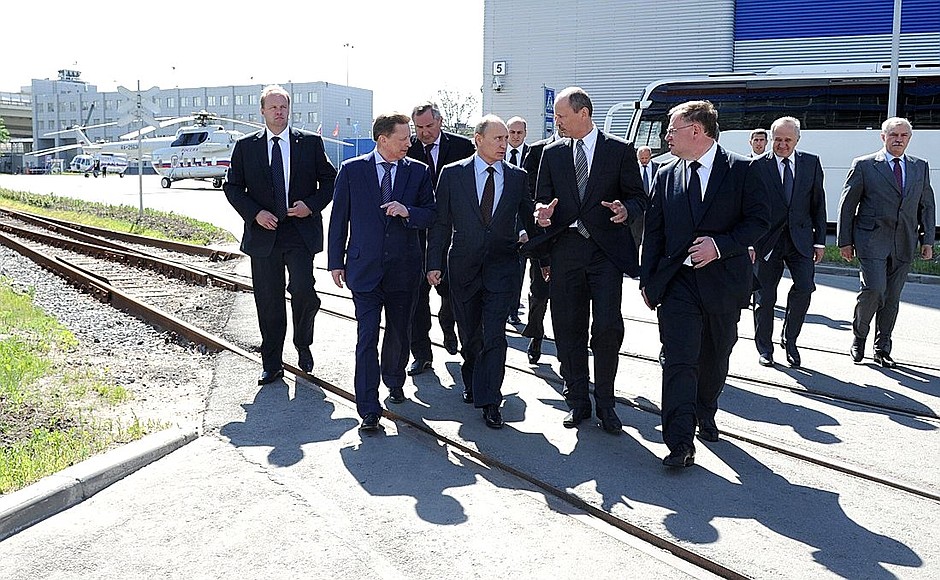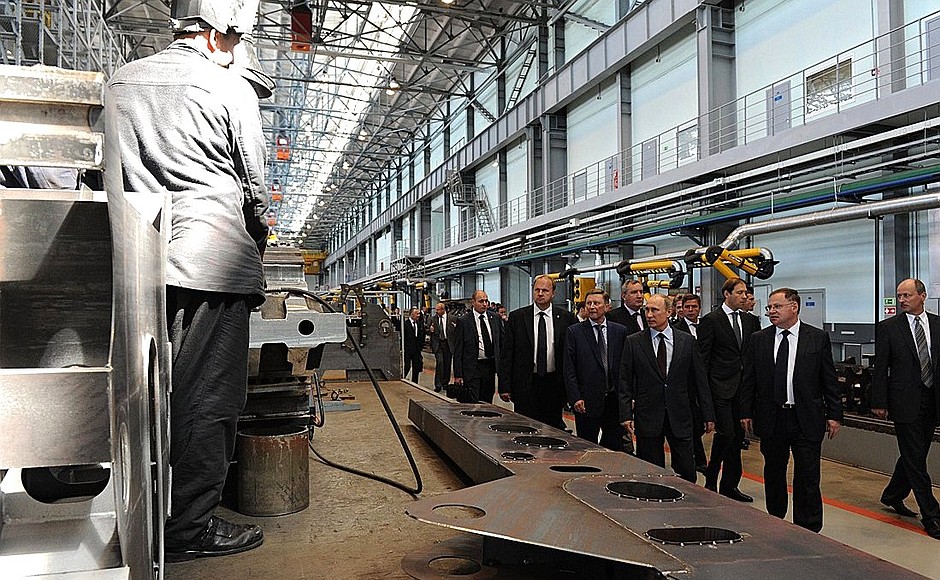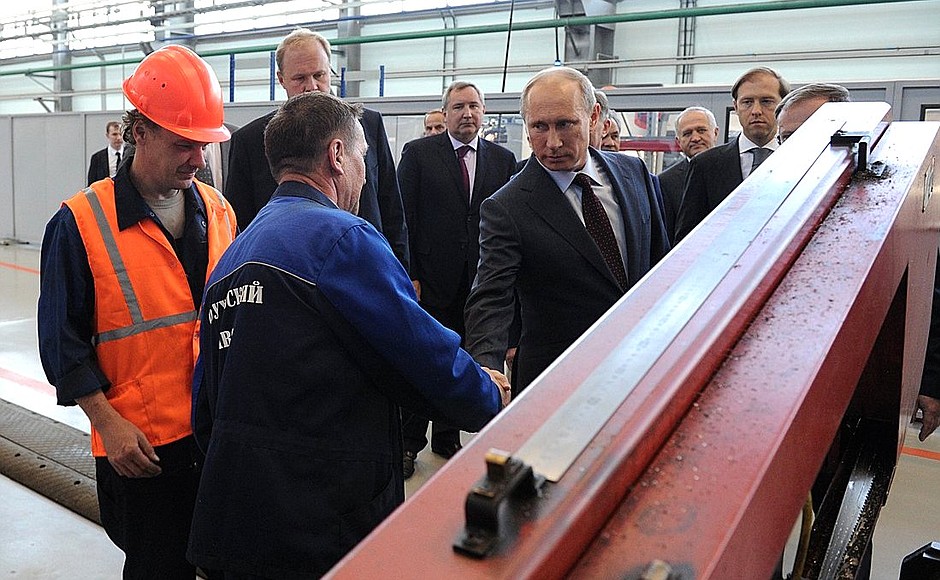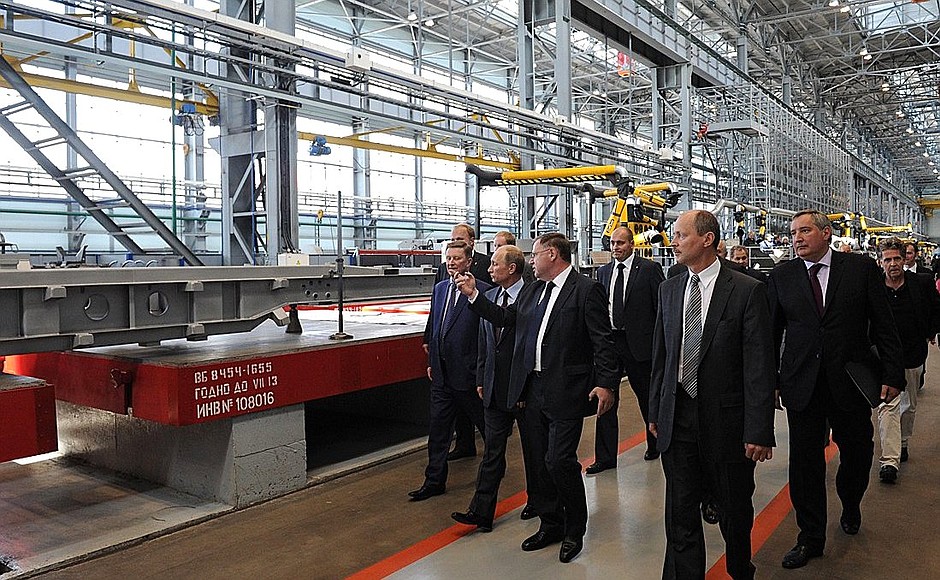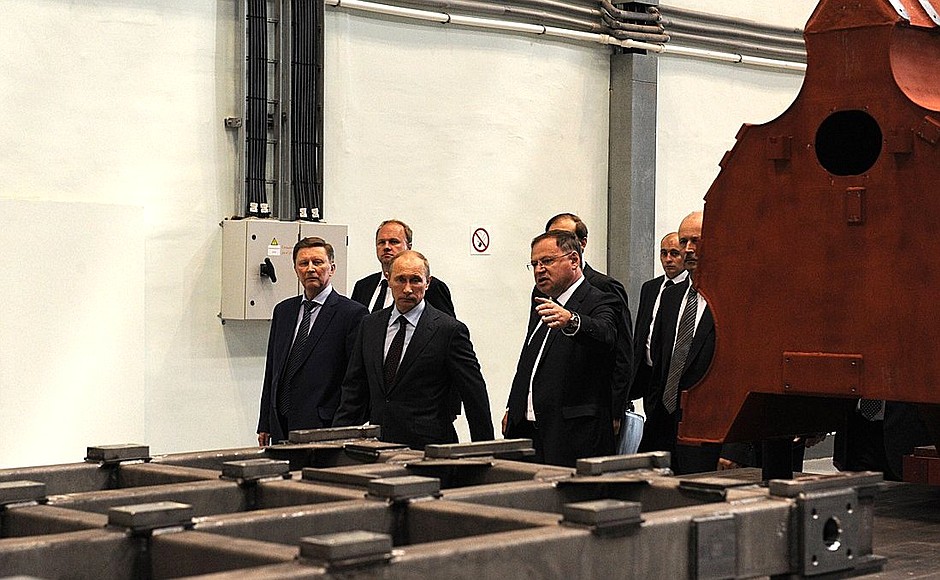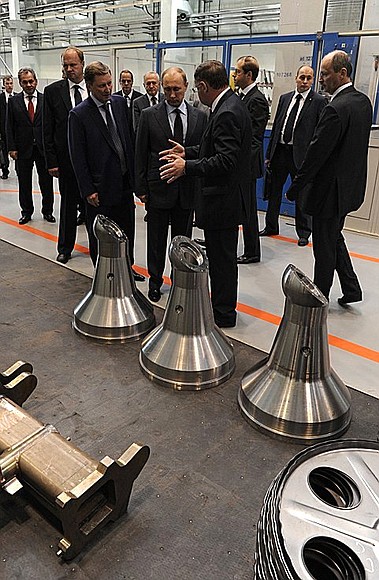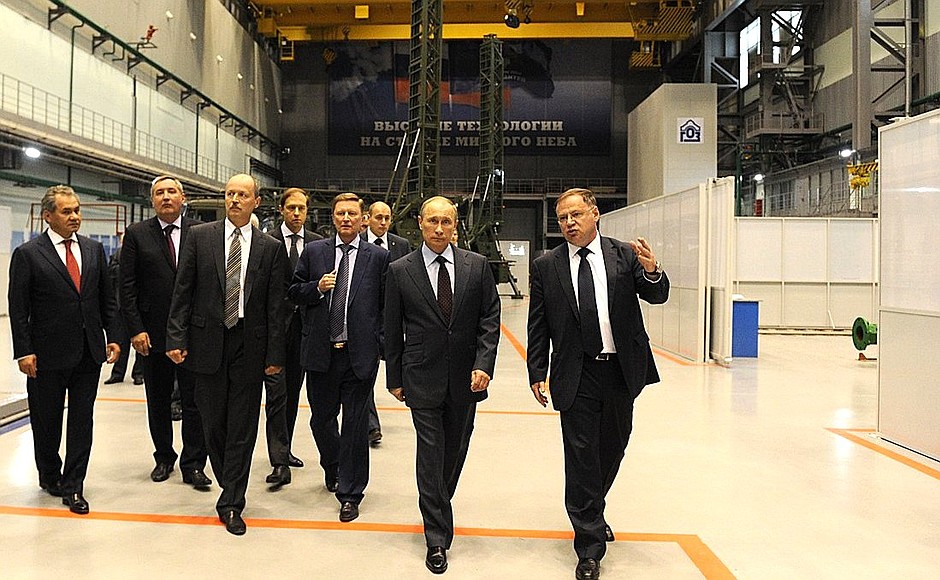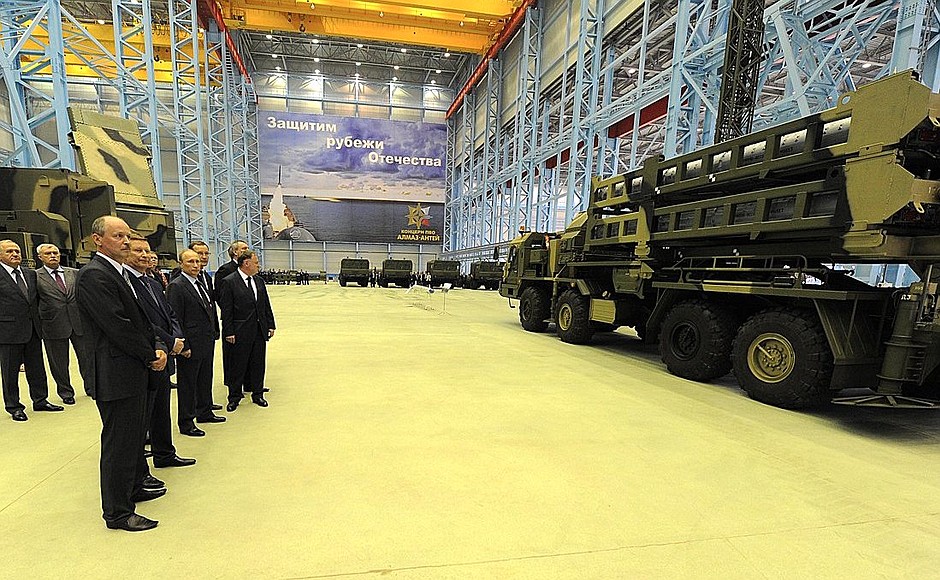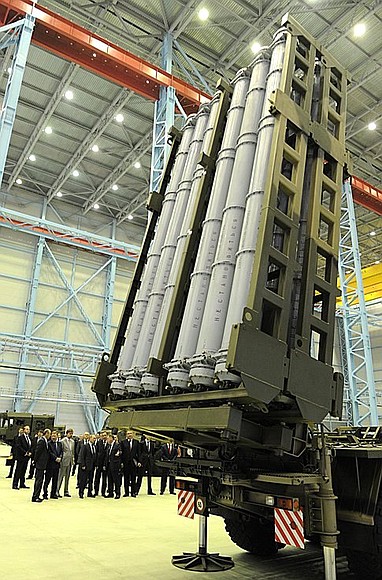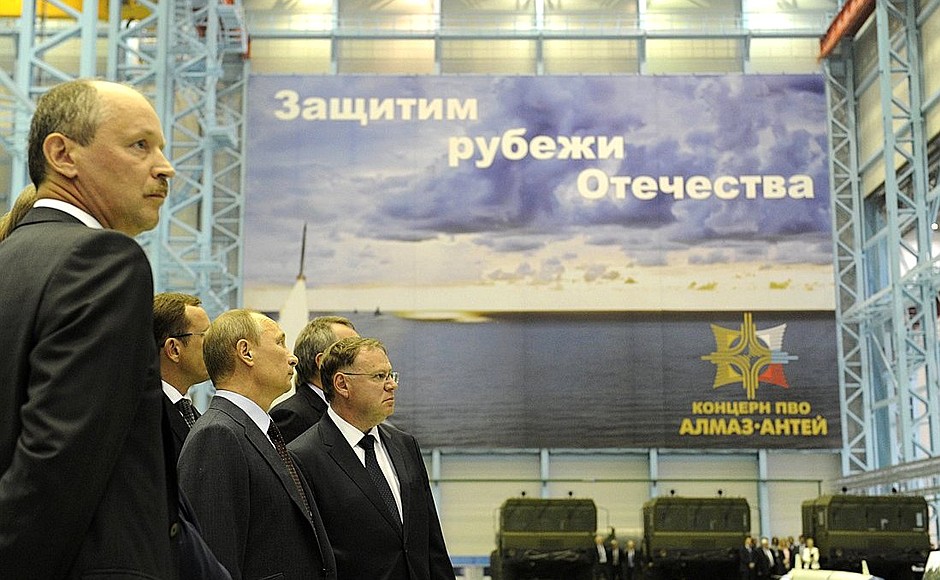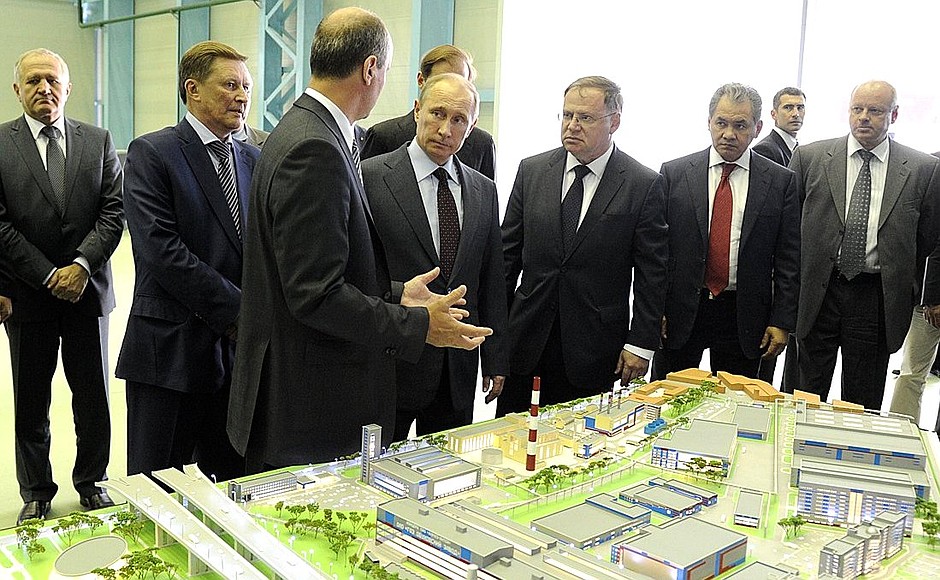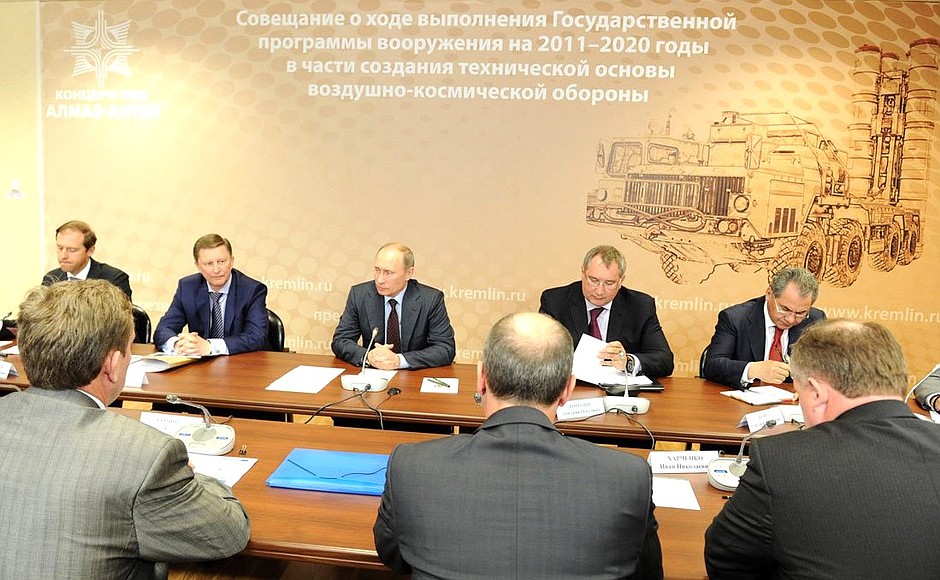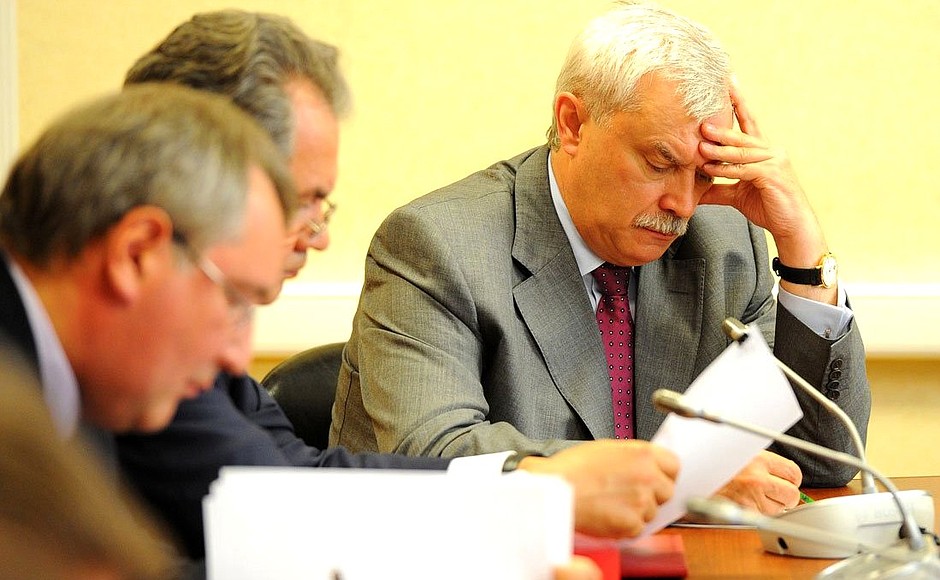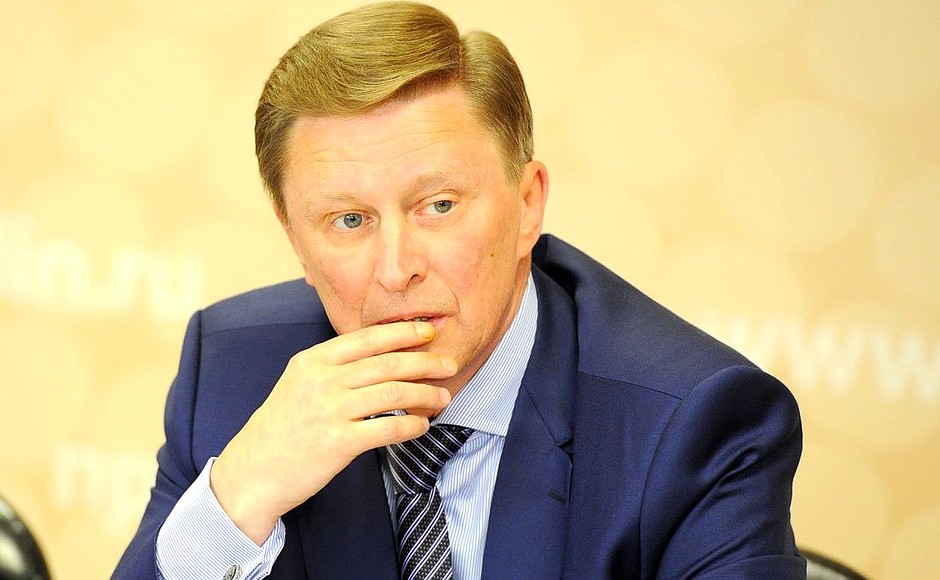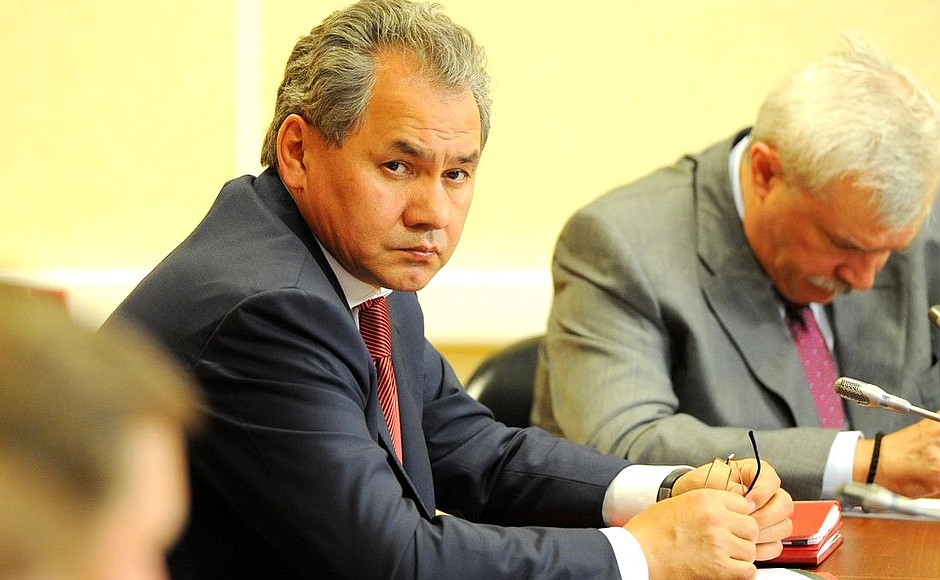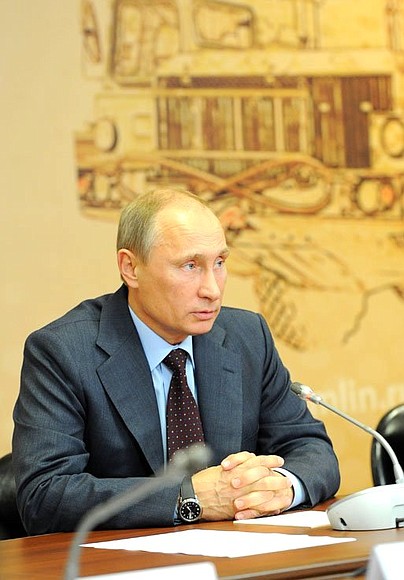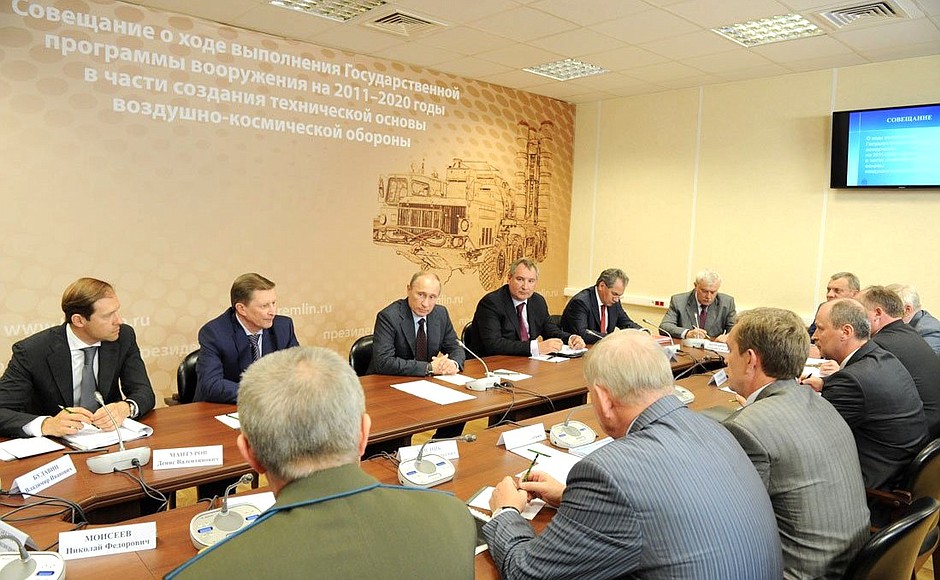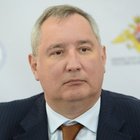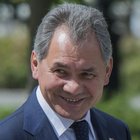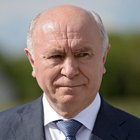Before the meeting started, the President visited the workshops and production line at the Obukhovo Plant, one of Russia’s leading defence industry companies, which specialises in design, development, installation and service of weapons systems and military equipment. Currently being established at the plant is the Northwest Regional Centre, a modern research, development and production facility that will unite five St Petersburg-based defence industry companies.
Mr Putin saw demonstrations of the equipment at one of the production workshops already in operation as part of the new centre. The President looked over parts of the production process, in particular, the manufacture of components for the S-300 missile system. Mr Putin was also shown finished examples the system.
* * *
Beginning of meeting on implementing the 2011–2020 state arms procurement programme, focusing on development of the technology base for air and space defence
President of Russia Vladimir Putin: Good afternoon colleagues.
We are here at one of Russia’s oldest defence sector companies, the Obukhovo Plant. The plant is already 150 years old now and was established in 1863, as I recall.
The plant went through hard times in the late 1990s, when it was near bankrupt and the state of its equipment and technology was not much better than its finances.
See also
Then the Almaz-Antey Holding was founded and the plant was included in it. I think many of you had the chance just now to see what is happening here today: there is a good development programme underway and the plant is pretty much back on its feet again. It produces the advanced S-300 and S-400 weapons systems, known around the world and very important for raising our defence capability, and other equipment too.
Most important of all is that the plant has good development prospects. We saw only about a fifth or a seventh of everything that is planned to be built here. All of this uses the very latest technology and the new systems are all fully digital, high quality and using the latest equipment. A whole programme is underway to re-equip the plant itself, which is very timely and important work.
The plant has been carrying out this technical modernisation programme by raising loans. At the same time we have already allocated quite a lot of money to modernising defence industry companies. Mr Menshchikov, you have not used these allocated funds so far?
General Director of Air Defence Company Almaz-Antey Vladislav Menshchikov: We began receiving funds this year. We are getting money for modernising equipment now, and will get 5.6 billion roubles for modernising the five companies as part of the federal targeted programme for developing the defence industry through to 2020.
Vladimir Putin: You need to use these funds. The Director [Director of the Obukhovo Plant Mikhail Podvyaznikov] said just now that building the technology park comprising the five companies will be a big help in optimising costs because the whole production chain will be technologically better organised and more convenient logistically with everything right here at hand, and so I think you should make good use of this experience.
We are here today to discuss overall implementation of one of the key areas of the state arms procurement programme through to 2020, namely, re-equipping the country’s air and space defence forces. We all realise that today’s needs dictate that we pay particular attention to this area.
We see that work is active around the world on developing high-precision conventional weapons systems that in their strike capabilities come close to strategic nuclear weapons. Countries that have such weapons substantially increase their offensive capability.
We know too, that the United States is continuing work on its strategic missile defence system. This project is undergoing some reconfiguration in terms of time and geography, and we see and welcome these steps our American partners are taking.
But at the same time, no one has renounced the programme and it is still going ahead. The question is only one of time: which components of the missile defence system will be deployed and when.
Furthermore, there has been increasing talk among military analysts about the theoretical possibility of a first disarming, disabling strike, even against nuclear powers. This is something that we also need to take into account in our plans for developing the armed forces.
Finally, not only the United States but other countries too are working actively on improving their offensive weapons systems, including medium-range missiles. Nearly all of our neighbours are developing these kinds of weapons systems.
I remind you that the Soviet Union in its time renounced medium-range missiles and signed a treaty to the effect with our American partners, which the Russian Federation has continued to uphold. True, it is a bit hard to understand why the Soviet Union agreed to this back then, given that these weapons have little relevance for the Americans in any case, as they have nowhere to use them.
But for the Soviet Union, and for Russia today, especially given that some of our neighbours are developing offensive weapons of this kind, this decision was debatable to say the least. But it was taken, and we now have to proceed from today’s circumstances.
We cannot accept a situation that would put the strategic deterrent system out of balance and make our nuclear forces less effective. This is why developing our space and air defences will remain a priority area of our military development plans. Effective air and space defence is the guarantee that will ensure our strategic deterrent forces remain effective, and will protect our country’s territory from air- and space-launched weapons.
I remind you that in accordance with the state arms procurement programme through to 2020, we will invest around 3.4 trillion roubles in developing our air and space defences. This is around 20 percent – around 17 percent to be more exact — of the total money earmarked for re-equipping the armed forces.
By 2015, our air and space defence troops’ arms must be no less than 50% modernised, and no less than 70% modern by 2020. These plans are being gradually implemented: the potential of the air and space defence forces has been bolstered by the brand new Voronezh-M and Voronezh-DM radar stations; the Pantsir-S anti-aircraft missile system has been adopted for use; S-400 systems are already being serially produced and delivered to troops; tests are underway on the Vityaz aerial defence anti-aircraft missile system, as well as the Konteyner and Nebo-M radar stations; the advanced S-500 system, which is capable of resolving problems even in near space, is under development. We will continue building our troops’ operational and tactical capabilities, creating a developed and highly-efficient system of air and space defence. And in this regard, I would like to note several specific challenges.
The first is that our air and space defence system is a very complex, multifunctional, tiered system. It includes a missile and aerial attack warning system and means for detecting and destroying targets. The creation of such a system requires detailed engineering, efficient construction and a thorough analysis of the threats and attack development plans, as well as precise coordination of objectives with other types and sorts of troops in the Armed Forces. The Defence Ministry and companies in the military industrial complex must take this into account in carrying out research and development to create the air and space defence system.
Furthermore, I want to once again draw attention to the absolute deadlines for creating and implementing budding air and space defence armament systems. Today, our serially produced air and space defence systems are among the best in the world. This is evidenced, in part, by their popularity (especially the air defence missile systems) within global weapons markets.
We are showing some of them – we spoke about this today – at the MAKS (International Aviation and Space Salon) exhibition this year. They are capable of providing guaranteed solutions to Russia’s air and space defence problems through 2020. But I repeat, both serial production and promising pilot projects must strictly follow the schedule without disruptions or any delays. You must take personal responsibility for this.
And finally, the Military Industrial Commission, the Interdepartmental Working Group on monitoring the implementation of the state armament programme, and the Defence Ministry and Military Industrial Complex must ensure they are working in close cooperation with one another. Each of you must not only follow the schedule precisely, but also walk step in step with your partners – this is one of the most important conditions for successfully achieving the full set of objectives in creating the air and space defence system.
I will now pass the floor to Deputy Prime Minister Dmitry Rogozin. But given that our Industry and Trade Minister [Denis Manturov] and Defence Minister [Sergei Shoigu] are with us today, I would like to draw your attention to the events happening in Samara Region [where ammunition explosions occurred at a testing site]. The testing site belongs to the Industry and Trade Ministry and uses ammunition from the Defence Ministry.
This morning, I gave corresponding instructions to several ministers who are working on location. As it happens, the Defence Ministry also got involved and is already working actively. I would like you to keep all of these instructions in mind. Mr Shoigu and I talked this morning, and I’m bringing Mr Manturov up to speed as well.
I spoke with Governor of Samara Region Nikolai Merkushkin about social issues, but these events, which are happening one after another (after all, this is not the first time something like this has happened), suggest that our current efforts to ensure safety and technological compliance in destroying ammunition are still not enough. I am pointing this out to you and asking you to keep it in mind in your future work.
Let’s begin our work.
<…>
